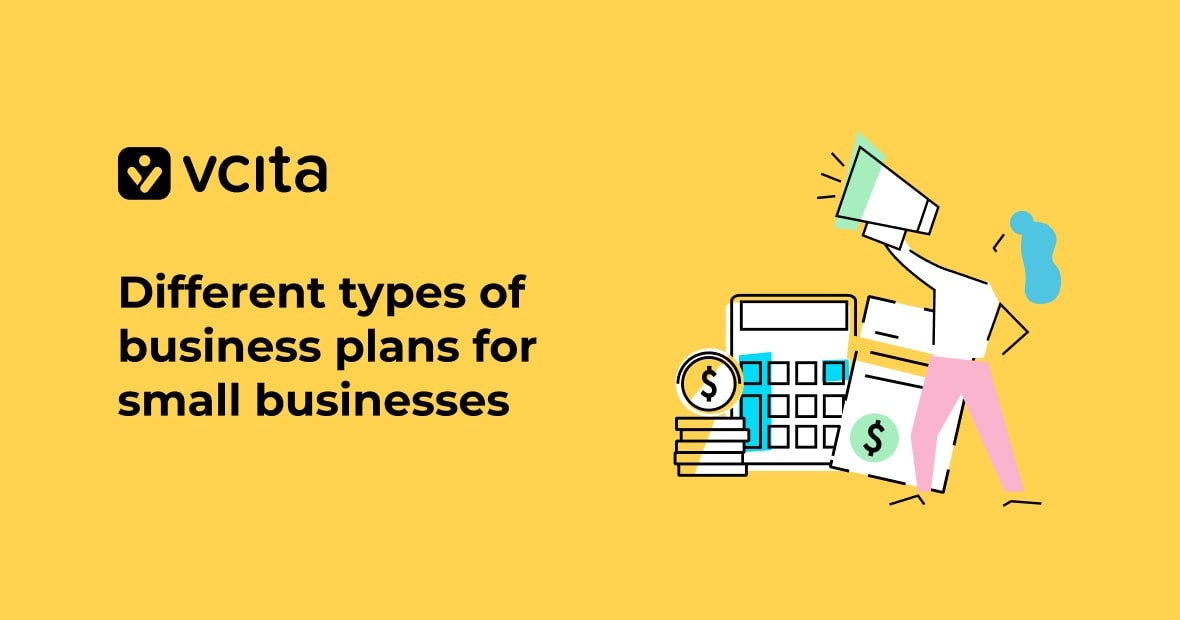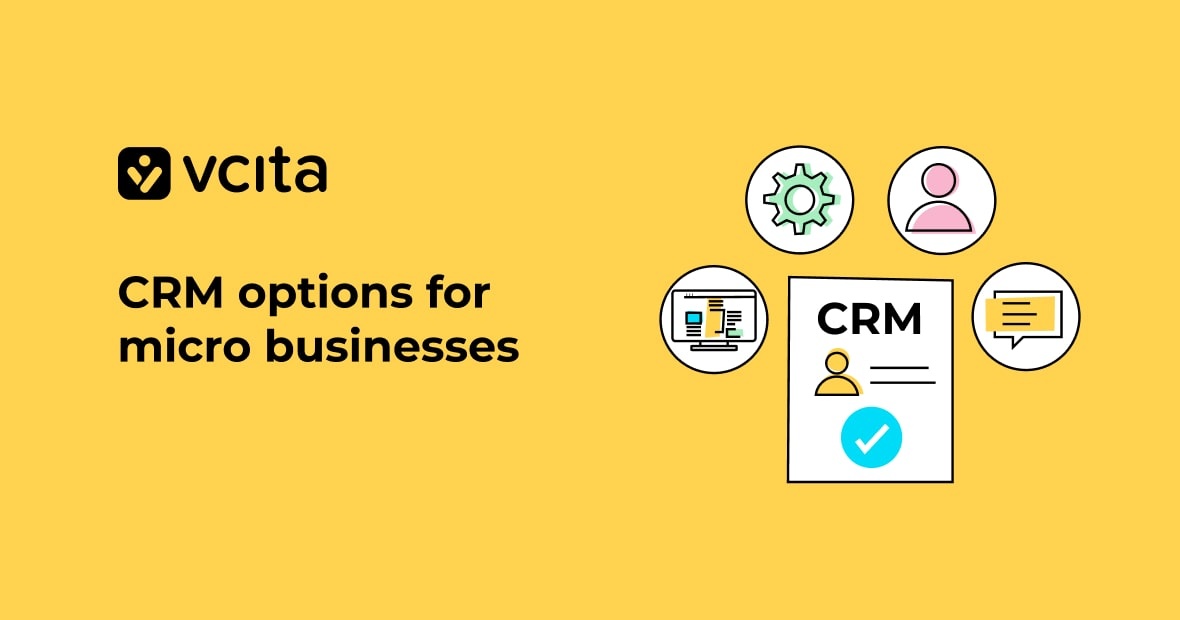Every business needs a business plan, whether you’re a solopreneur running a side hustle or the owner of a thriving small business. Your business plan is like a mission statement and guide to help you focus your resources more effectively, and make better strategic decisions.
It’s particularly valuable when you’re just starting a new business, your business has hit a turning point and you need to make some difficult decisions, or if you want to grow your business. In some cases, you won’t be able to proceed without one. For example, if you’re looking for funding, potential investors will want to see a startup plan.
But there are many different types of business plans. Each one is appropriate for a different situation. Before you sit down to write a business plan, you need to know whether to write a high-level strategic plan, an internal plan, a feasibility plan, or a detailed operations plan, to name just a few.
In this article, we’ll demystify the options so you can choose the right plan outline, explore the key parts of different plans, and investigate the specific benefits for each type of plan. You’ll come away with the tools you need to write an effective business plan.
What is a business plan?
A business plan is a document that outlines your goals, plans, and forecasts for your business. It can be an internal guide that sets deadlines and gives direction to teams, or a startup plan, feasibility plan, or strategic plan to attract external investment and support.
Why are business plans important?
A business plan can serve as the backbone of your business. It helps you make the right decisions, clarifies your goals, and helps prove that your business is viable and trustworthy.
Here are some of the main reasons why you should write a business plan:
- Clarify your vision to define your goals and direction
- Attract investors and lenders to secure business funding
- Develop a roadmap that guides your decision-making
- Identify risks and challenges that could derail your business
- Measure progress by setting milestones and performance metrics
- Align your team to ensure that everyone works towards common goals.
- Set actionable steps towards scaling your business and driving growth
Key components of a business plan
Although every business plan is slightly different, they all share some common elements. Here are the core components that should be included in any type of plan.
- Executive summary. This is a concise overview of the business, including the mission statement, key objectives, company name, what products/services you are selling, and your target audience. Keep this section short and engaging.
- Company description. Share more information about your business, including its structure, key employees, ownership, and the problem it aims to solve. Describe your offering and value proposition, and outline your business backstory.
- Market analysis. Present your research into your industry, target market, and competition, including both potential risks and opportunities. Show how your offering fills a gap in the market, explain market needs, and define your ideal customer.
- Organization and management. This is an overview of how you’ll achieve your goals. Cover your organizational structure, the leadership team, and company assets, and outline how long it will take for you to begin operations and achieve profitability.
- Marketing and sales strategies. Explain how you will attract and retain customers, including pricing, promotion, and distribution strategies. You could include a SWOT analysis, and evaluate your competitors’ sales marketing strategies.
- Financial plan. Provide financial projections to show how the business will be profitable. Include income statements, cash flow statements, and balance sheets, as well as your predicted operational costs and other costs, on a weekly, monthly, and annual basis.
- Funding requirements. If you’re planning on applying for funding, you’ll need a section that outlines how much capital you need, how you’ll use it, and what kind of return investors can expect to see.
The traditional business plan
The traditional business plan is a very detailed plan that provides a comprehensive overview of your company and your plans for growth. It describes your business in detail, to help potential investors and partners understand your mission and your potential for success. If you’re seeking funding, a traditional plan can be essential to attract investors and reassure them that your company is a good investment.
Typically, a traditional business plan will include an executive summary, company description, market analysis, and details about your company’s organization and management. Describe your products or services and your marketing and sales strategies, and end with clear, easy-to-read financial projections and a funding request. Make sure to back everything up with research and reports. You might want to add an appendix with extra data and reports.
The start-up business plan
A startup business plan is a high-level, strategic plan that outlines your target market, product or service, company description, and financial projections. The goal is to communicate your vision to potential investors and outline key milestones to achieve over the next 6-18 months. It should be much shorter and faster to prepare than a traditional plan, so keep it to no more than 5-10 pages.
You’ll want an executive summary that covers your mission statement, product or service, value proposition, and target market. Then describe your business, including your business model, competitive advantages, strengths, weaknesses, opportunities, and threats (SWOT) analysis, and ideal customer. Explain how you will generate revenue and deliver a return on investment, including an exit strategy. Give the main benefits for your product or service, share key financial documents, and discuss your operational plan, marketing and sales strategies, and management team.
The one-year business plan
A one-year business plan looks just one year ahead for your business. It focuses on achieving specific short-term goals and objectives within a 12-month period, giving the key strategies, actions, and resources required to reach these goals. It’s ideal for small businesses that need to adapt quickly to market changes, secure funding, or implement new initiatives.
You’ll need a short executive summary and your short-term goals for the next 12 months. Other sections include a marketing strategy detailing how the business will attract and retain customers, an operational plan that outlines day-to-day activities, a budget and financial plan that forecasts revenues and expenses, and performance metrics that will be used to measure success.
The five-year business plan
A five-year business plan is there to help you take a long-term view of your business, financial projections, and goals. The focus is on setting a clear roadmap for sustained business growth and long-term stability. It’s essential for mapping out how the business will evolve, scale, and achieve sustainability over time. It’s best to combine it with a one-year plan, so that you keep a balance between long and short term thinking.
The key components of a five-year business plan include an executive summary that captures your long-term vision, detailed market analysis and competitive analysis to understand trends and competition, and a strategic plan for product or service development. It also includes a marketing and sales strategy that evolves over the five years, an operational plan that scales with growth, and comprehensive financial forecasts for revenue, expenses, and profitability, with specific milestones and timelines.
The strategic business plan
Strategic plans take a high-level, long-term view of your business goals and direction to help you evolve important business strategies. It is invaluable for businesses that are planning for long-term growth and development, or preparing to pivot or expand into a new market. This plan uses SWOT analysis to define your mission, and gives vision statements to align your team. It doesn’t include operational details, but helps set priorities and milestones.
The most important sections for a strategic plan are an executive summary, a review of your strategic goals, and detailed market and competitive analysis. Analyze your target market size and trends, discuss your key competitors and their strengths and weaknesses relative to your own, and assess potential threats and how you will mitigate them. Explain your strategic initiatives, plot resource allocation, and outline how you will track and measure performance.
The feasibility business plan
A feasibility plan is usually an internal plan to evaluate the viability of a business idea. They help determine the level of risk and potential for success. This way, you can evaluate the potential of your idea and determine if it’s viable before investing a lot of time and money into it. Depending on the results, you may proceed to develop a full business plan, or make changes to your concept.
A feasibility plan needs careful market analysis and risk analysis to determine if there are enough potential customers and how you can gain a competitive advantage. Describe your idea in an executive summary, and give a detailed explanation of your product or service and how it will meet your target market’s needs. You’ll also run some financial projections to illustrate your assumptions, costs, and potential revenues, and calculate startup costs and ongoing expenses.
The operations business plan
Operational plans outline the key steps required to run your business efficiently. It’s essentially a high-level overview of how your business functions on a day-to-day basis, to identify any inefficiencies and set the stage for growth and scalability. Operational plans ensure consistency and quality in product/service delivery, providing a blueprint for managers and staff to follow. It’s not normally shared with potential investors or external parties.
In an operational plan, you’ll review your daily workflow processes and map out your operational flow from start to finish. Describe your business location(s), any equipment needed, and your management team, including each person’s role and responsibilities. You’ll also need an executive summary with your mission statement, your operational goals, resource management framework, and the performance metrics you monitor on a regular basis.
The internal business plan
The internal business plan is a high level, strategic plan made to help align employees and teams, and improve internal processes. To strengthen alignment and ensure employee input shapes these internal strategies, companies can use anonymous feedback tools to gather insights that drive more effective internal business planning. Unlike traditional business plans focused on external stakeholders, this plan is developed solely to drive internal development and define areas for improvement. It’s usually simpler than a traditional business plan or strategic plan.
An internal plan includes a company description, your mission and vision, target market, product or service details, and financial projections. You’ll do a SWOT analysis, and define your ideal customer and your competitive advantage. Most importantly, you’ll outline key strategic initiatives and priorities to propel your business growth, together with milestones and timelines for product development.
How to choose the right business plan
Once you know the benefits and uses of different types of business plans, you can select the right one for your needs. It all depends on your business stage, your goals, and timeframe, as well as the intended audience for this plan.
For example, are you writing a plan to raise funds, or to improve processes within your business? Is it aimed at external parties like investors, or an internal audience like your key stakeholders? Do you want to prove the viability of a new idea, strategize the best way to scale, or make your business more efficient? Will you plan for the next 12 months or the next 5 years?
Plans aimed at investors would need to be longer and more detailed, while shorter plans are more effective for internal purposes.
Tips for writing an effective business plan
Once you’ve decided on the type of plan, you’re ready to sit down and actually write it. It can be easier said than done, so we’ve gathered our top tips for building an effective plan that helps you improve your business.
Understand the purpose of your plan
Before you sit down to create the plan, make sure that you know exactly why you’re writing it, whether that’s to raise funds, guide your employees, or direct future growth.
Know your audience
It’s just as important to know who will be reading your plan. Are you talking to investors, your employees, potential partners, or a bank manager?
Be clear and concise
Keep your plan short and to the point, and avoid using jargon or technical language that the average reader wouldn’t know.
Be thorough about your research
Invest plenty of time in areas like market analysis, competitive analysis, or exploring your target audience. Be objective, and find authoritative and relevant data points that you can cite.
Set realistic financial projections
Make sure that your financial projections are clear and easy to read, and most of all that they are realistic. Base them on solid research so that they are trustworthy and reliable.
Write a compelling executive summary
The executive summary is vital for convincing external parties like investors or potential partners to support your business, so make it compelling.
Demonstrate your UVP
Don’t be shy to communicate your UVP — Unique Value Proposition — frequently throughout your business plan. Reiterate what makes your business stand out in the market.
Include visual aids
Include plenty of images in your plan. You can add extras like examples of brand messaging, customer personas, and product demos in an appendix, so that your core plan stays concise.
Ask for help
Don’t be afraid to ask for help from mentors, advisors, or experts who have done this before. Show your drafts to key stakeholders to get their feedback and find ways to improve it.
Refresh it whenever necessary
Your business doesn’t stay still, and nor should your business plan. Revisit your plan on a regular basis to update it, edit it, and adapt it.
Common mistakes to avoid in your business plan
There are some errors that occur time and again in business plans. Here are the most common mistakes, so that you can make sure to avoid them.
- Not doing enough research can undermine the credibility of your business plan. Dig deep into your market, industry, target audience, competition, and more. Don’t make assumptions that you can’t back up with data.
- Failing to set clear objectives can leave you with a business plan that’s unfocused and unclear.
- Ignoring the risks that your business might have to overcome means you won’t take any steps to mitigate them. These ignored risks could then sink your business.
- Poor writing that is riddled with spelling and grammar errors, full of technical jargon, and uses overly-complex language that is hard to understand.
- A weak executive summary that doesn’t make a compelling case for your business.
Start writing your business plan today
Now that you’re familiar with the common types of business plans, their key components, and when it’s best to use each one, as well as best practices for writing a good business plan, you’re ready to get started. Select the right type of plan for your objectives and audience, and regularly review and update your plans to account for changes. Whether you need a high-level strategic plan, startup plan, or internal plan, align it with your goals and make your executive summary compelling.




























